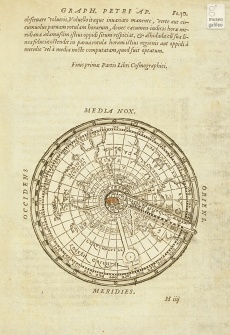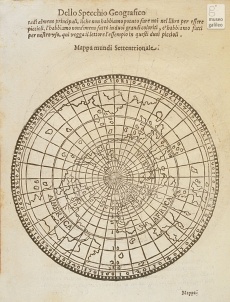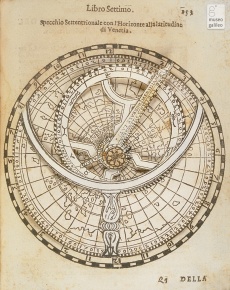Cosmographic Mirror
From Inventions
Name coined by the inventor (in Latin speculo cosmographicum).
Contents |
Inventor
Pietro Apiano
Historic Period
1533
Description
Also called "geographic mirror", this is an instrument similar to Leon Battista Alberti's horizon described by Pietro Apiano (1533) for compiling a map of the world in stereometric projection. It consists of a disk bearing, as in the planispheric astrolabe, a stereometric projection of the Tropics and the equator. A radius pivoted to the centre and carrying a distance scale is used to transfer to this diagram the coordinates of the places (position angles and distances) taken by means of a similar radius made to rotate around the North Pole on the surface of a terrestrial globe. This provides a map of the world centred on the North Pole and extending as far as the Tropic of Capricorn. The method derives from the Viennese cartographic school, which had been applying it since the first half of the preceding century to compile corographic maps centred on a particular city.
Bibliographical Resources
Apianus, Petrus. Cosmographicus liber Petri Apiani mathematici, iam denuo integritati restitutus per Gemmam Phrysium, item eiusdem Gemmae Phrysij libellus de locorum describendorum ratione, et de eorum distantijs inveniendis, nunquam ante hac visus. Antverpiae, Ioan. Grapheus typis cudebat, 1533.
Bennet-Durand, Dana. The Vienna Klosterneuburg map corpus of the fifteenth century: a study in the transition from medieval to modern science, Leida, E.J.
Brill, 1952, pp. 111-112.
Existing Instruments
Florence, Museo Galileo. Institute and Museum of the History of Science, Inv. 1285.
Images
Author of the entry: Filippo Camerota




